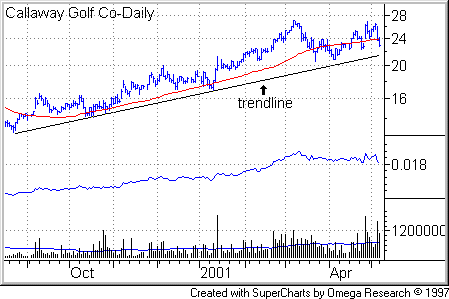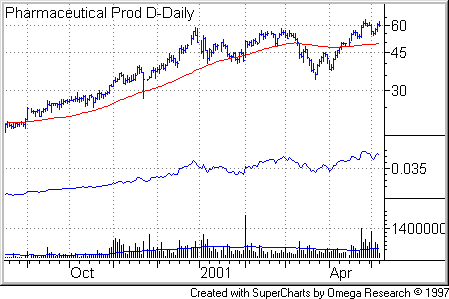No Predictions, No Emotions
Trading success so often
boils down to a mind game. You must set aside emotions like euphoria, fear and
… frustration. Callaway Golf offers a good example of what I’m talking
about. Â
In
my May 3 commentary, I observed that Callaway Golf
(
ELY |
Quote |
Chart |
News |
PowerRating) appeared to be
setting up in a cup-with-handle pattern. The stock had many of the technical and
fundamental traits that I seek in a prospective long trade. The entry signal
would have come if the stock had exceeded the April 27 intraday high. Instead, Callaway sold off on May 4 and Monday followed through to the downside.

The
price and volume picture for this stock certainly looks bearish. But as traders,
we don’t make predictions. We watch, recognize and where warranted respond.
Does this mean I give up
on the stock? It’s not a matter of “giving up.” Callaway’s nine-month uptrend remains intact. The stock has
neither breached its trendline nor its 200-day moving average. (Not depicted in
the above chart.) Does this mean
that I would buy the stock is here? No. Though not guilty, Callaway remains on
trial. It must prove itself by advancing back above its 50-day moving average
and mid range, then resetting in a proper base with an identifiable pivot point.
The relative strength line also must recover to new high ground.
The
point is, don’t become frustrated if a watch-list stock undergoes bouts of
volatility. Some stocks, like Callaway, will set up and fail. Others will set up
and breakout, drawing you in before reversing and stopping you out. If the stock
holds above the lows of its old base, it might recover and offer a fresh
opportunity. Keep such stocks on your radar screen. Don’t allow your past
experience with a stock to color your interpretation of its chart. Look at each
chart with a fresh pair of eyes.
This
does not mean that you should step into high volatile stocks. Let’s say that a
stock forms a cup-with-handle, breaks out, then reverses and stops you out. If
it sets up a new handle or restores the old one, the price action in the handle
should tighten back up on a decline in volume.
For
more on the psychological aspects of trading, see my lesson, The
Mindful Discipline of the Medium-Term Trader.
Pharmaceutical
Product Development
(
PPDI |
Quote |
Chart |
News |
PowerRating) may be trying to set back up. The stock broke
out on April 24 from a cup-with-handle pattern, then ran into volatility. Here’s
an example where quick reflexes pay off. If you caught the stock as soon as the
stock crossed above the April 18 handle high, you probably could have ridden out
the pullback on May 1-2. However, if you were late and bought near the April 24
high and used a fixed 7% or 8% stop, you probably would have gotten shaken out.

Remember
that all stocks are
speculative. On any new trade, be sure to limit your risk by limiting your
position size and setting a protective price stop where you will sell your buy
or cover your short in case the market turns against you. For an introduction to combining price stops
with position sizing, see my lesson,
Risky Business.
